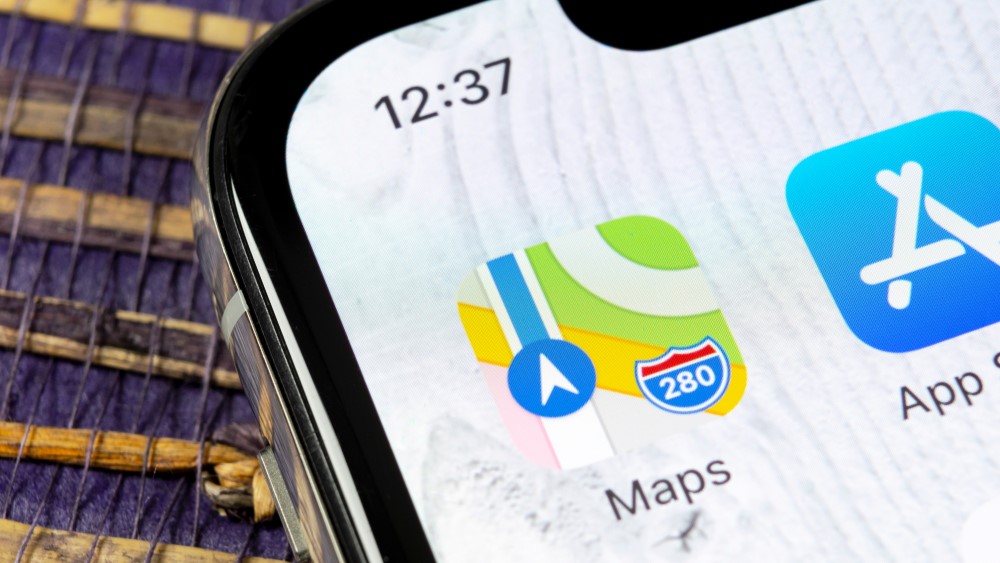Apple Maps is getting a new feature in iOS 17 — 8 years after Google Maps
Offline maps are finally coming to Apple Maps

Apple announced a lot of software updates at WWDC 2023, including various upgrades and features to its existing suite of iPhone apps that will arrive as part of iOS 17 later this year. One of those upgrades involves adding offline navigation to Apple Maps — a feature that is well overdue.
I’m not a regular Apple Maps user, stemming from the fact I’ve primarily been an Android user for the past 12 years or so. In fact, the revelation that Apple Maps doesn’t have offline mapping was a huge shock to me, especially since Google launched this feature back in 2015.
Apple Maps has improved a lot, but this is a serious oversight
The launch of Apple Maps back in 2012 was pretty turbulent, with the app suffering from a multitude of problems. In the decade plus since that problematic start, Apple Maps has changed a lot, to the point where it is a solid navigational app with many of the same features and services as its biggest rival, Google Maps.
Naturally I had assumed that, like Google, Apple offered some sort of offline navigational system. It’s one of those features that’s pretty important for navigation, especially if you’re traveling long distances.
There’s no guarantee you’ll get cell service crossing the more remote parts of the country, and the last thing you want is to get lost because your mapping app relies on a live connection. That’s arguably a lot more important than features like Look Around/Street View, because it serves a mapping app’s core purpose to make sure people can get from A to B.
There's also the fact that live navigation eats into your data allowance. There have been some reports of excessive data usage in Apple Maps, particularly after major updates. According to Statista, back in 2020, Apple Maps was the leader in data consumption — with an average usage of 1.83MB per 20 minutes. Google Maps apparently used 0.75MB on average, while Waze’s average was just 0.23MB.
It’s not a massive amount of data, but it’s the kind of thing that can add up over time, especially on those long road trips. Offline mapping still requires a decent chunk of data when you download maps, but at least you have the option of downloading the route in one go on a home Wi-Fi connection — which should have a slightly less strict data limit.
Apple Maps is finally fixing a mistake it shouldn’t have made
Like many of the mistakes that plagued Apple Maps after it first launched, Apple is rectifying this problem with iOS 17. Adding offline mapping now and fixing this mistake is not a bad thing, but it’s still incredibly confusing as to why Apple waited this long.
We don’t know any of the details behind Apple Maps’ new offline mapping feature, but presumably it’ll work in much the same way as Google’s. For those that don't know, Google Maps’ offline downloading lets you download and save mapping information from set areas. It can also be configured to automatically save routes as and when you start a new trip.
Google Maps’ offline navigation works so well that you barely notice when you lose coverage. Certain features can’t update if there’s no internet connection, like live traffic updates, but the app can still tell you where to go and how to course-correct if you ever go wrong. We expect Apple Maps to operate in much the same way, once the update hits.
The only question we have is why did this take so long? Apple Maps has huge reach, coming pre-installed on every iPhone Apple sells, and yet it’s missing a feature that almost all its rivals have to offer — even those not owned by Google.
Here Maps, Open Street Map, Sygic, Maps.Me and others have all offered offline capabilities for some time. The richest company in the world has only just got around to it 11 years after its own navigation app launched — and eight years after Google introduced the feature.
Granted, it took Google Maps a long time to add offline navigation as well. The app initially launched on Android in 2008, adding turn-by-turn navigation in 2009 and offline navigation six years later in 2015. While we can’t expect Apple to offer perfect parity with Google Maps right away, it shouldn’t have taken so long to add such a crucial feature.
Plus, if anything offline navigation ties into Apple’s privacy-first philosophy better than live navigation. While the company would still have to mask your requests to download maps in specific places, no data connection means it’s a heck of a lot harder for anyone to try and track your location in real time.
iOS 17 Maps bottom line
While I may sound like a broken record, it doesn’t change the fact that it is baffling Apple has taken so long to add offline mapping. It’s such a useful and important part of a navigational arsenal that I just assumed it was already there — there was certainly no good reason for it not to be.
Thankfully this mistake is being rectified, and soon. Let’s just hope that whatever offline mapping system Apple has in store for iOS 17 is more like Google Maps, which is a little more user-friendly and clear when maps have been downloaded, and less like Waze — which is not.
More from Tom's Guide
Sign up to get the BEST of Tom's Guide direct to your inbox.
Get instant access to breaking news, the hottest reviews, great deals and helpful tips.

Tom is the Tom's Guide's UK Phones Editor, tackling the latest smartphone news and vocally expressing his opinions about upcoming features or changes. It's long way from his days as editor of Gizmodo UK, when pretty much everything was on the table. He’s usually found trying to squeeze another giant Lego set onto the shelf, draining very large cups of coffee, or complaining about how terrible his Smart TV is.
-
kep55 I use duckduckgo for my computer search engine. DDG uses Apple maps. Compared to Google maps, Apple maps stink. The coloring, level of detail, readability fall far below Google's. The biggest failing is Apple maps doesn't have street view which is an incredibly helpful feature when searching for a specific building.Reply
